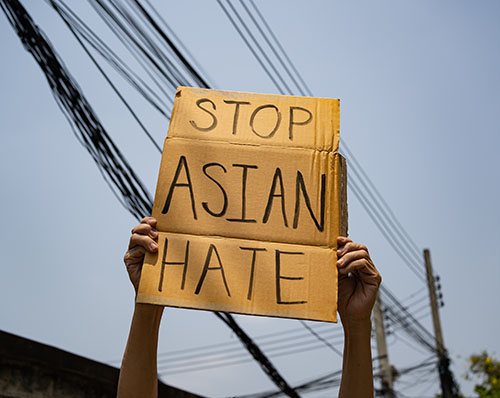Anti-Asian Racism: Tracing Incidents

One of the most serious side effects arising from the coronavirus pandemic is anti-Chinese sentiment and Sinophobia. The echoes of the cries of “Chinese virus” resound far beyond the current pandemic and into a long history of anti-Asian hostility in the United States. Asian American communities have become the scapegoat of the pandemic and were put in a vulnerable position: lost in limbo, with doors shut to them, borders hardened, and facing severe discrimination
This anti-Asian racism project, started in 2021 and sponsored by the UH Asian American Studies Center, serves as an educational resource for the public and other researchers. The project was produced by Center Director Dr. Yali Zou, Dr. Melody Yunzi Li, and Dr. Sammy Hwang.
- Storymap: The Color of COVID
- Timeline: Trends in Harassment, Discrimination, and Stigmatization During the COVID-19 Pandemic
Using the Storymap as an effective technological and educational tool, we demonstrate how anti-Asian racism is a historically constructed notion over time, as well as the big picture of anti-Asian incidents during the pandemic through data of three states: New York, California, and Texas. We also collected numerous individual experiences recorded through writings, photographs, and interviews from newspapers and social media, which portray a collective, traumatic experience to the Asian American community. We provide these educational resources to inform the public of the seriousness of this issue, and we call for more researchers and educators to look into this subject.
Due to limited time, we have not collected all the information and data, so this is only a preliminary step toward a bigger project. We hope the start of such a GIS anti-Asian hate project will contribute to the field of Asian American studies and bring this issue to the attention of the public at large.
Project Sources
According to the FBI’s website, hate crime is defined as a “criminal offense against
a person or property motivated in whole or in part by an offender’s bias against a
race, religion, disability, sexual orientation, ethnicity, gender, or gender identity.”
A hate incident is an action or behavior motivated by hate but which, for one or more
reasons, is not a crime. Examples of hate incidents are name-calling, insults, or
displaying hate material on your own property.
This anti-Asian racism project uses news media articles and public hate crime data
sets in each state. For 2021, we reviewed all 50 state crime data set portals and
decided to choose three states most relevant to our project: New York, California,
and Texas, the three states with the largest Asian populations.
The state of Idaho has a captivating and unique data set related to hate crimes, but we decided not to include it this time. We could easily find a data set from New York and California, as they have well-organized information on their crime portal sites. For Texas, it was relatively difficult to find a clean data set. Of note, Houston, the largest city in Texas, did not report an increase in hate crimes, pushing us to understand the issue of silence further.
Please see the further reading list at the end of each tab.
Special Thanks
We would like to give special thanks for the generous support from the UH Asian American Studies Center and the UH Office of the Provost’s Multicultural Success Initiative. Kyle Dou, a Ph.D. candidate in Chinese Studies at Washington University in St. Louis, and Mei Preimesberg, an Asian American Studies Center research fellow, helped us collect and analyze some data about the incidents.
We also want to thank Digital Research Commons from UH Library. In addition, former UH student Queen Epomba, a master’s student in Public Health at National Taiwan University, helped tremendously in putting the collected data into the visual display of the Storymap.